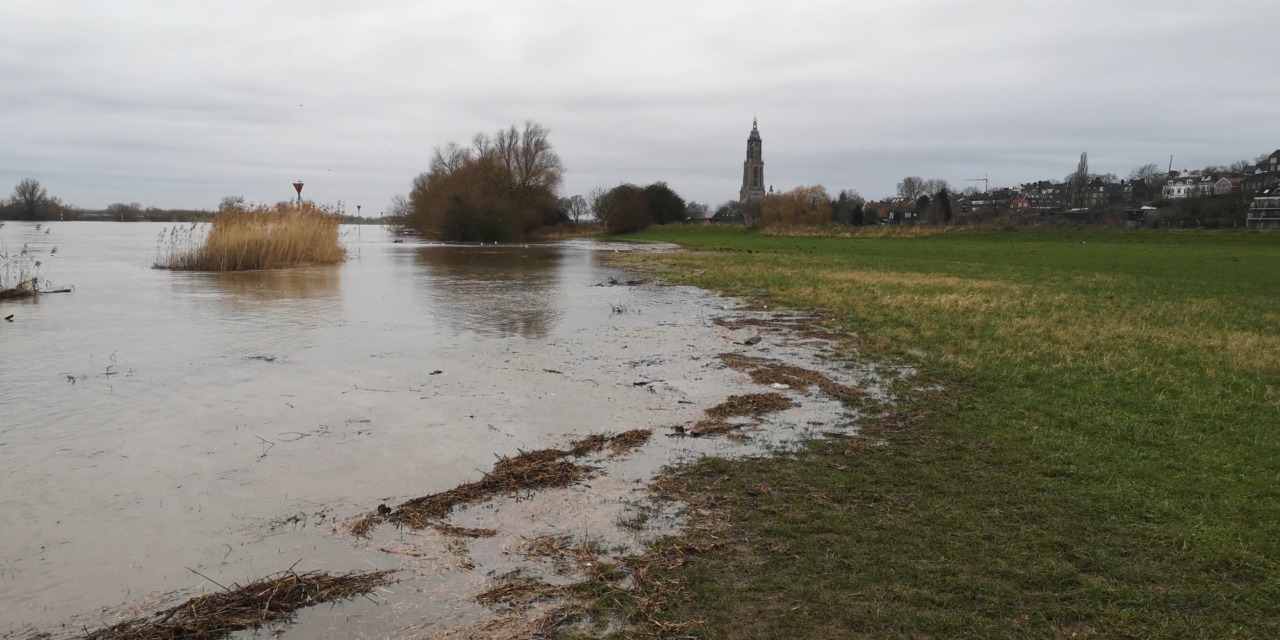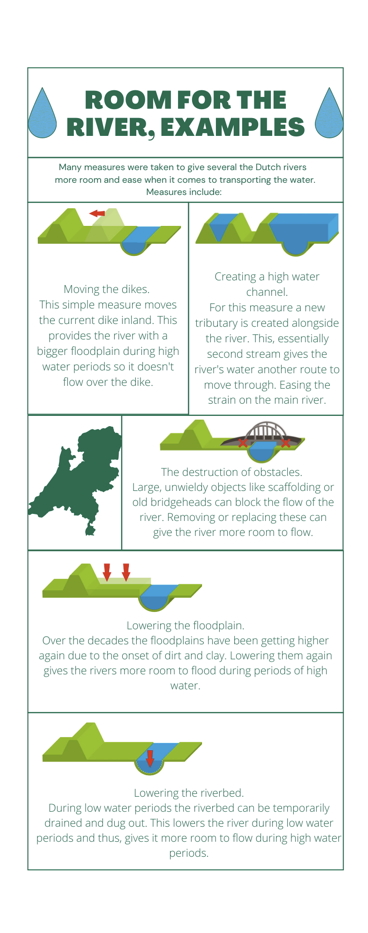Historically speaking, The Netherlands has been marred by the constant danger from the North Sea. A very popular example of the danger posed by the North Sea took place in early 1953, a large part of the south-west flooded due to a storm and high water, causing almost two thousand deaths and unspeakable damage. This disaster prompted the Dutch to embark on a massive defensive line of dams called the Deltaworks.
While the warfront towards the sea has been secured. Now the trouble comes from the other directions. The many rivers flowing through the Netherlands have been growing and flooding steadily the past few years. In July 2021 this reached its latest high point, the European floods of 2021 were among the worst seen in decades. Thus, the focus has shifted from the sea to the rivers.
How did the regional and national governments work to improve rivers so far?
One of the most pivotal Dutch waterworks projects was the so-called Room for the River project. This effort by all levels of governance launched in 2007 and ended in 2019, with a focus on giving the rivers more room to lodge the excess of water into the ground or the sea. All in response to high water and subsequent widespread evacuations in the mid-1990s.
Many measures were taken to give several the Dutch rivers that stem from the Rhine more room and ease when it comes to transporting the water. A few examples of these are heightening or removing existing dikes, the removal of unnecessary bridges and even the creation of smaller canals next to the river to essentially create a second river.
During the high-water period of the summer of 2021, Room for the River got its greatest test so far. The Meuse River reached its highest peak in 100 years according to the Dutch Department of Waterways. However, on many places where Room for the River left its mark, the river managed to barely flood if at all. Thus, saving those towns and villages that had to be evacuated before from the risk of repeating the past.
However, floods still occurred in other parts and left a terrible toll like in many other European nations. Many towns further down the south of the Netherlands still flooded, causing damages worth hundreds of millions of Euros. While rivers as high as the summer of 2021 are rare, high water is common in The Netherlands throughout the year.
Is a different approach needed?
Dams, dikes, and extra space for the river can’t keep working forever. Especially considering scientists predict that heavy flooding like in the summer of 2021 will keep occurring. Even a month before those floods, a research paper published in Geophysical Research Letters warned that heavy flooding will continue to plague the world due to climate change.
Professor in Water Management, Kees van Leeuwen, believes that a different approach focused on biodiversity and nature to preventing flooding could bear fruit more effectively. “Things such as replacing pavements in cities with grass, that is a very cheap solution when it comes to filtering water into the ground.”
Dr. Gerard van den Berg, a project manager at KWR Water Research Institute also believes that the cities themselves could be changed, on how they use water. Traditionally a city is built with water pipelines in mind. “It just gets delivered through pipes and discarded via the sewer system.” However, things seem to be changing. “We are now transitioning into a circular way of thinking, it’s a waste to, for example, not use the water we use from showering. It’s not that dirty.” This water could easily be cleaned and reused for another purpose.
These kind of measures and ideas are quite common, but Van Leeuwen thinks many gains could be made by looking towards farmlands and rural areas. “The majority of the country’s rural areas consist of ryegrass, which we planted because the cows grow well from it and produce a lot of milk.” However, this manipulation of the biodiversity has caused problems regarding water filtering, causing both floods and draughts. “The roots all grow at the same length, which means that the layers of dirt below the roots is void of roots to drink up the water.”
“The biodiversity declines and so does the rooting. Causing us to end up with but a few plant species living at shallow depths while we used to have many with roots reaching down whole meters.” Van Leeuwen believes that tackling these issue’s, along with bringing more green into our cities will help prevent a lot of flooding.





